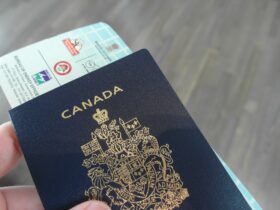Canada has emerged as one of the top destinations for international students seeking a quality education. With its world-class universities, diverse culture, and high standard of living, it’s no wonder that thousands of students choose Canada as their preferred study abroad destination. In this blog post, we will explore the various aspects of studying in Canada, including scholarships, visa requirements, and the admissions process.
-
Scholarships in Canada
Canada offers a wide range of scholarships and financial assistance programs to attract international students. These scholarships are provided by the Canadian government, educational institutions, and private organizations. Here are some popular scholarships for international students in Canada:
a) Canadian Government Scholarships: The Canadian government offers various scholarship programs, such as the Vanier Canada Graduate Scholarships, Canada-ASEAN Scholarships and Educational Exchanges for Development (SEED), and the Emerging Leaders in the Americas Program (ELAP).
b) University-specific Scholarships: Many Canadian universities have their own scholarship programs for international students. These scholarships are often merit-based and can cover tuition fees, living expenses, or both. Examples include the University of Toronto International Scholarships, University of British Columbia International Leader of Tomorrow Award, and McGill University Scholarships.
c) External Scholarships: Several external organizations, such as the Fulbright Program, the Commonwealth Scholarship and Fellowship Plan, and the Organization of American States (OAS), also offer scholarships for international students studying in Canada.
-
Visa Requirements
To study in Canada, international students generally need a study permit, which is a type of student visa. Here are the key steps and requirements for obtaining a study permit:
a) Acceptance from a Designated Learning Institution (DLI): Students must first receive an acceptance letter from a Canadian educational institution designated by the government.
b) Proof of Sufficient Funds: Applicants need to demonstrate that they have enough money to cover tuition fees, living expenses, and return transportation.
c) Health and Security Requirements: Students may be required to undergo a medical examination and provide police clearance certificates.
d) Application Submission: Once all the necessary documents are gathered, students can submit their study permit applications online or at the nearest visa application center.
-
Admissions Process
The admissions process for Canadian universities may vary slightly between institutions, but generally, it follows these steps:
a) Research and Shortlist: Students should research universities and programs that align with their academic and career goals. Consider factors such as program requirements, location, and university rankings.
b) Application Submission: Students need to complete the university’s application form and provide the required documents, which typically include academic transcripts, letters of recommendation, a statement of purpose, and English language proficiency test scores (e.g., IELTS or TOEFL).
c) Application Review: The university’s admissions committee reviews applications based on academic performance, extracurricular activities, personal statements, and other relevant factors.
d) Offer of Admission: Successful applicants receive an offer of admission, which outlines the conditions, program details, and any scholarships or financial aid offered.
e) Acceptance and Enrollment: Students must accept the offer by paying a deposit to secure their spot and follow the enrollment procedures outlined by the university.
Conclusion
Studying in Canada offers international students an enriching and rewarding experience. The country’s commitment to quality education, cultural diversity, and welcoming environment makes it an attractive choice for students from around the world. With a wide range of scholarships available and a streamlined visa process, pursuing higher education in Canada has become more accessible. By understanding the scholarship opportunities, visa requirements, and admissions process, students can embark on their journey to study in Canada with confidence and open doors to a bright future.





